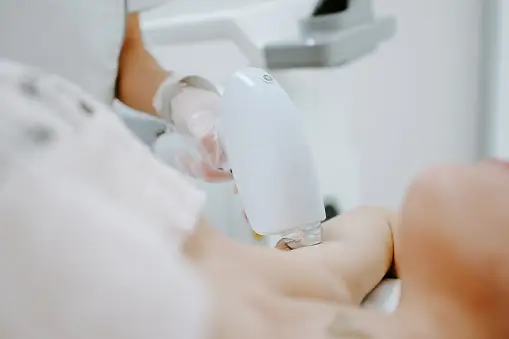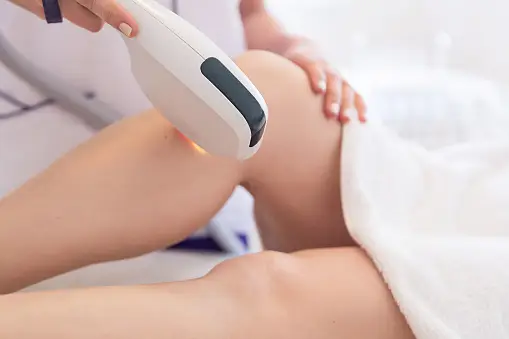No, you cannot get HPV (Human Papillomavirus) from laser hair removal itself. HPV is a sexually transmitted virus that is spread through direct skin-to-skin contact, typically through sexual activity. Laser hair removal is a cosmetic procedure that uses concentrated beams of light to target and destroy hair follicles, and it does not involve the exchange of bodily fluids or direct contact with an infected person.
However, it’s important to note that any medical or cosmetic procedure involving the use of equipment or instruments should be performed in a sterile and safe environment to minimize the risk of infections or complications. In rare cases, if proper infection control procedures are not followed during the laser hair removal process, there could be a risk of skin infections, but these would not be related to HPV specifically.
To reduce the risk of infections or complications, it’s essential to choose a reputable and qualified practitioner for laser hair removal and ensure that they follow all recommended safety and hygiene protocols. Additionally, if you have concerns about HPV or other sexually transmitted infections, it’s a good idea to speak with a healthcare provider who can provide guidance on prevention and testing.

Can you catch anything from laser hair removal?
Laser hair removal is generally considered a safe and low-risk procedure when performed by trained and qualified professionals in a clean and hygienic environment. However, like any cosmetic or medical procedure, there can be potential risks and complications, although they are relatively rare. Here are some things to consider:
- Infections: If proper hygiene and sterilization procedures are not followed, there is a small risk of bacterial or fungal infections. To minimize this risk, make sure you choose a reputable and licensed facility with experienced practitioners who follow strict infection control protocols.
- Skin irritation: After laser hair removal, it’s common to experience some temporary skin irritation, such as redness, swelling, or mild discomfort. This is usually short-lived and can be managed with topical treatments.
- Hyperpigmentation or hypopigmentation: Changes in skin color, either darkening (hyperpigmentation) or lightening (hypopigmentation), can occur after laser hair removal. These changes are typically temporary but can be more persistent in individuals with darker skin tones.
- Burns and blisters: In rare cases, laser hair removal can lead to burns or blisters, particularly if the practitioner uses an inappropriate setting for your skin type or if the equipment is not used correctly.
- Scarring: While extremely rare, there have been cases of scarring as a result of laser hair removal. This risk is higher when the procedure is performed incorrectly or on individuals with a history of keloid scarring.
To minimize the risk of adverse effects and complications, it’s important to:
- Choose a reputable and licensed practitioner or facility.
- Follow all pre- and post-procedure instructions provided by your practitioner.
- Inform your practitioner of any medical conditions, allergies, or medications you are taking.
- Be honest about your skin type and any recent sun exposure, as this can affect the treatment settings.
- Consider a patch test before the full procedure to check for adverse reactions.
Overall, the risk of catching infectious diseases from laser hair removal is very low if proper hygiene and safety protocols are followed. However, it’s essential to do your research and choose a qualified practitioner to ensure a safe and effective treatment.
